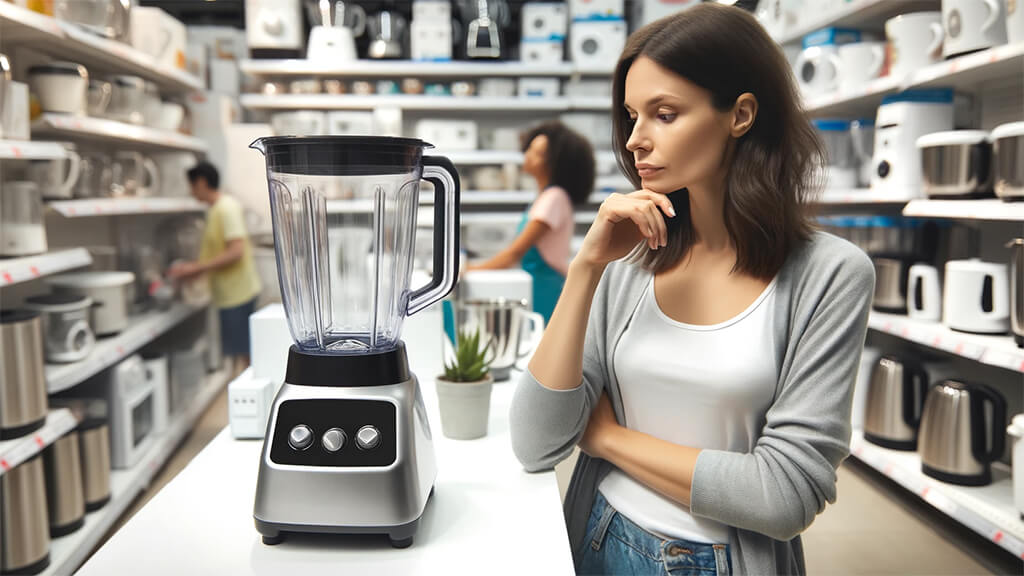When you're on the hunt for the best smoothie blender, it can seem like a daunting task. But getting it right is crucial for that ideal smoothie texture. In this buying guide, I'll break down the essential features to keep in mind, such as motor power, noise levels, warranty, etc. These factors will simplify your smoothie-making and ensure you're putting your money in the right place.
Why Choosing the Best Smoothie Blender is Crucial?
Choosing the right smoothie blender matters a lot. It's not just about getting a quick drink; it's about making tasty, healthy smoothies without a fuss. A good blender should make everything smooth and be easy to clean after.
You want a quick blender that doesn't make a big mess. The best ones are easy to clean—give them a quick rinse or toss them in the dishwasher. This way, you can enjoy your smoothie without spending much time cleaning it.
It's also important that your blender lasts a long time. It would be best if you didn't have to buy a new one yearly or so. A strong blender that keeps working day after day means you've spent your money well, and it will keep making good smoothies for years.
Key Features to Consider When Buying the Best Smoothie Blender
Now that I've highlighted why having a top-notch blender is essential for an excellent blending experience let's focus on the specifics. I'm going to walk you through the important features that you should look for in a blender.
Mastering Blender Specs
Knowing a blender's power, size, and blade type is critical to finding one that fits your daily needs and does the job well.
Powerful Motor
A key aspect of choosing the right blender is its motor strength. You should look for a smoothie blender with a motor at least 500 watts. This power level is essential for crushing ice and blending frozen fruit smoothly and efficiently. Additionally, a more robust engine extends the versatility of your blender, enabling you to tackle more demanding tasks like making homemade nut butter. Whether it's peanut or almond butter, a high-powered motor means your blender can do it all, ensuring you get the most out of your kitchen appliance.
Blade Design
A great blender relies on blade design as much as motor power. The best blades are usually dull, not sharp, engineered to pulverize rather than slice – this creates a smooth, even blend. Take premium brands like Vitamix: their blades are intentionally dull yet highly effective, proving sharpness isn't necessary for superior performance. Opt for stainless steel for its long-lasting durability.
Speed and Control
It is important to have control over the speed of your blender to enable versatility. Look for a blender with adjustable speed settings that allow you to gently chop the ingredients before moving to a higher rate for a smooth finish. Features like a pulse function and pre-programmed settings are also indicators of a superior blender, giving you more control and preventing over-processing of your blends.
Jar Capacity and Shape
When selecting a blender, aim for at least a 40-ounce jug to ensure you can make multiple servings simultaneously. Opt for a pitcher with a tapered design to facilitate better circulation of ingredients for a smoother blend. Additionally, choosing a plastic jug that is BPA-free is a smart choice for health safety, and they're often lighter and more durable than glass, making them less prone to breaking.
Build Quality
For longevity and resilience, opt for a blender with a metal drive system rather than plastic, as it's better suited to withstand the rigors of frequent use. Pay close attention to the quality of the switches, control dials, and other components of the blender's interface. They should be made from high-quality materials that feel sturdy and not from cheap plastics that could break easily. A blender built with durability in mind will ensure a longer lifespan and a better blending experience.
Essential Convenience Features
These make your blending quick and hassle-free, offering easy cleanup, quieter operation, and reliability for everyday use.
Ease of Cleaning
For convenience, choose a blender with dishwasher-safe parts or those featuring self-cleaning cycles. Just fill it with warm water, add a few drops of soap, and spin for about 30 seconds. It can save time and eliminate the need for manual scrubbing. Although this feature makes things easier – it isn't essential. Take older Vitamix models, like the 5200. They aren't dishwasher-safe. Yet, their build quality and performance are outstanding! It still makes them a leading choice among robust, potent blenders.
Noise Level
It's an undeniable fact that blenders can be noisy, especially high-powered ones. For those living in an apartment or for early risers, noise can be a concern. While it's challenging to find a truly quiet blender, some options can help mitigate the noise. Personal blenders are not as loud and may suffice if you make only smoothies for one. For more robust blending needs, premium blenders like the Blendtec Professional 800 come equipped with noise-reducing shields, which can cut the noise by up to 40%! However, these advanced features tend to be reflected in a higher price tag, so it's worth considering how much the extra quiet is worth to you.
Warranty
When investing in a blender, the warranty length can be just as important as the machine's features. It's an indicator of the manufacturer's confidence in their product. Premium brands often offer extended warranties, some up to 10 years, which can be particularly reassuring if you plan to use your blender heavily daily. In contrast, other brands may only provide a 1-year warranty. From my perspective, opting for a blender with a longer warranty is a smart move. The motor, being the heart and most expensive component of the blender, can wear out with rigorous use, especially in entry-level models. So, having a longer warranty not only provides peace of mind but also protects your investment over time.
Which Smoothie Blender Is The Best For You?
Think about how much you'll use your blender and what you want from it. If you love making smoothies and want a machine to do it all, invest in a more expensive blender like Vitamix or Blendtec. These aren't just for smoothies; they're so powerful that you can make all sorts of things, like homemade nut butter! They're built to last and have many settings to help you make whatever you want. People who make smoothies and want them to be perfect go for these brands, including me!
But if you're not making smoothies all the time and don't want to spend a lot of money, you can find some good, less expensive blenders. NutriBullet and Ninja are two of these. They're not as fancy as the more expensive ones, but they still do a great job of making your smoothies smooth. They're a good middle ground – not too pricey, but good quality.
I hope this guide helps you pick out the best smoothie blender and eliminates any worry about making the wrong choice! Ready to blend your way to smoothie perfection? Explore my top picks for the best smoothie blender and find your ideal match today.

